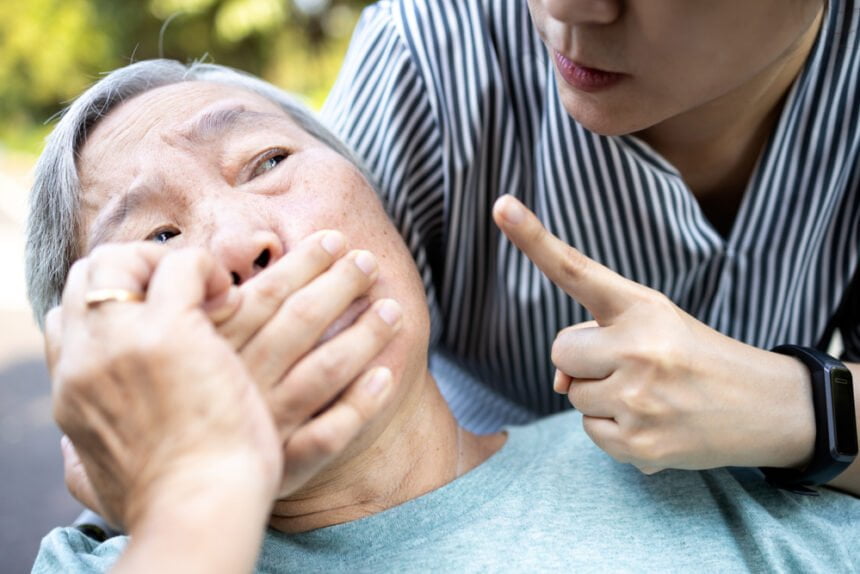Have you noticed unexplainable bruising on your senior loved one or observed them clambering around their home, unable to perform basic tasks? If so, it may be time to discuss the possibility of moving them to an assisted living facility to help them navigate their day-to-day life safely. However, before you haul your elderly parent or loved one to the nearest center, you need to account for the safety concerns that come along with institutional care.
Unfortunately, senior living facilities come with a unique set of health hazards, from neglectful staff to low-lighting to medication mess-ups. There is an overlooked epidemic of nursing home abuse. That said, you can dodge potential disasters by comparing different centers and selecting a top-rated institution or bypassing facility care altogether by enlisting an at-home caregiver.
When you opt for a caregiving service like 24 Hour Home Care, you can keep health risks at bay without sacrificing your elderly loved one’s comfort. The in-house staff offers seniors personalized, compassionate, hands-on care in the safety of their space, allowing them more independence and freedom. However, depending on your elder’s condition and disabilities, they may need more round-the-clock services provided by a facility.
If you and your elderly loved one are considering an assisted living center, read on for eight hazards to watch out for before sending them off to an insufficient, ill-staffed home.
Sub-par alert system
Although assisted living facilities may offer more comprehensive, continuous care to your senior loved one, keeping a constant eye on each patient 24/7 is impossible. To combat periods where the elders are unsupervised, reputable care centers have installed security equipment that can alert staff of unseen accidents. The right medical alert system can do a lot to protect them.
Unfortunately, many elderly living institutions forgo proper safety systems resulting in dangerous situations and health complications for your loved one. Ultimately, it would be wise to steer clear of facilities that are missing essential emergency pull-chains, reachable call buttons, and personal alarm devices.
Low-lighting
Another hazard many well-meaning loved ones overlook when admitting their senior parent into a facility is low or too bright lighting. While it may not seem like a significant detail, dim or harsh light can easily disorient senior citizens, causing dangerous trips and falls. To bypass unnecessary hazards, elderly centers should include well-lit common areas, additional lighting via lamps, and easily accessible switches to ensure senior safety.
Medicinal miscalculations
For seniors who rely on multiple medications to keep painful, disruptive health complications at bay, administering the correct amount is critical to avoid adverse effects or overdose. While top-rated assisted living facilities have organized, well-oiled methods of administration and tracking, ill-equipped centers often find pills slipping through the cracks. Take special care in selecting a facility that cross-references medications and keeps tabs on daily doses to bypass nasty side effects or dangerous overtreatment.
Inaccessible walkways
When searching for a living facility for your senior loved one, make sure you visit each place to check for uneven, inaccessible walkways that increase the risk of slipping and falling. While one might expect senior centers to feature spacious hallways and clutter-free pathways, some older, ill-equipped facilities may be cramped and unkempt. If your elderly loved one relies on a walker, wheelchair, or cane to navigate their space, walkway obstructions could make it impossible for them to move about safely.
Missing railings
An essential component of any high-quality care facility is accessible, sturdy handrails and grab bars that keep unsteady seniors from tumbling to the ground when wobbling throughout their space. Unfortunately, many assisted living institutions have inadequate railings, resulting in unsafe conditions for unbalanced individuals or those prone to dizzy spells.
In addition to staircases or ramps, handrails should be installed next to each bed, beside toilets, and down hallways to ensure elderly folk can utilize the facility in its entirety. Additionally, all chairs should have solid armrests that can bear weight when leaned against for support.
Staff misconduct and abuse
Unfortunately, there is a long history of neglect and misconduct amongst caregiving staff in assisted living facilities, resulting in mentally and physically dangerous situations for elderly folk.
While reputable centers have implemented more strict, intensive background checks and feature a zero-tolerance policy for abuse, others are laxer, causing a dip in compassionate, personalized care. Before you select a facility, read reviews and look closely for a history of complaints to ensure your loved one receives humane care at the hands of experts.
Unmaintained flooring
Older, run-down assisted living facilities often feature under-maintained flooring that can be potentially dangerous for seniors simply walking to and from their room. Between uneven hardwood panels, grimy, germ-infested carpet, and rug-happy walkways, you’ll want to avoid poorly maintained flooring at all costs to ensure your loved ones can navigate their space freely.
Contagious infections
When residing in a space with immunocompromized seniors, it can be nearly impossible to avoid infections or viruses entirely. That said, when choosing a facility for your elderly loved one, make sure staff are well-equipped to handle outbreaks with antibiotics and other medications to curb the infection curve. Without proper precautions in place, infectious germs and diseases can spread like wildfire, wreaking havoc on the resident’s health.
Wrapping up
While it may seem like the safer option to send your senior loved one off to an assisted care facility, there are significant risk factors to consider that can negatively affect their mental and physical health. Should you decide to overlook the benefits of aging in place, avoid centers with ineffective security systems, inaccessible walkways, and heaps of client complaints to ensure your elderly family member is comfortable and well-taken care of in their new home.

